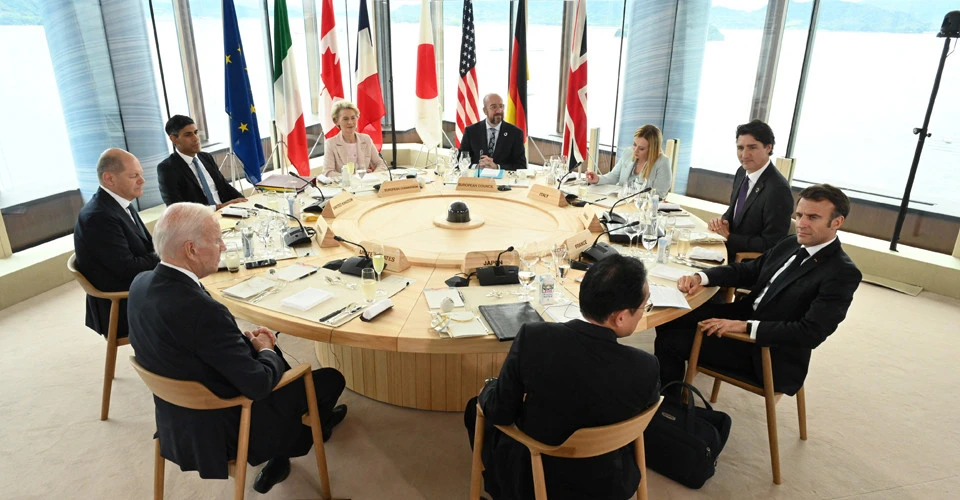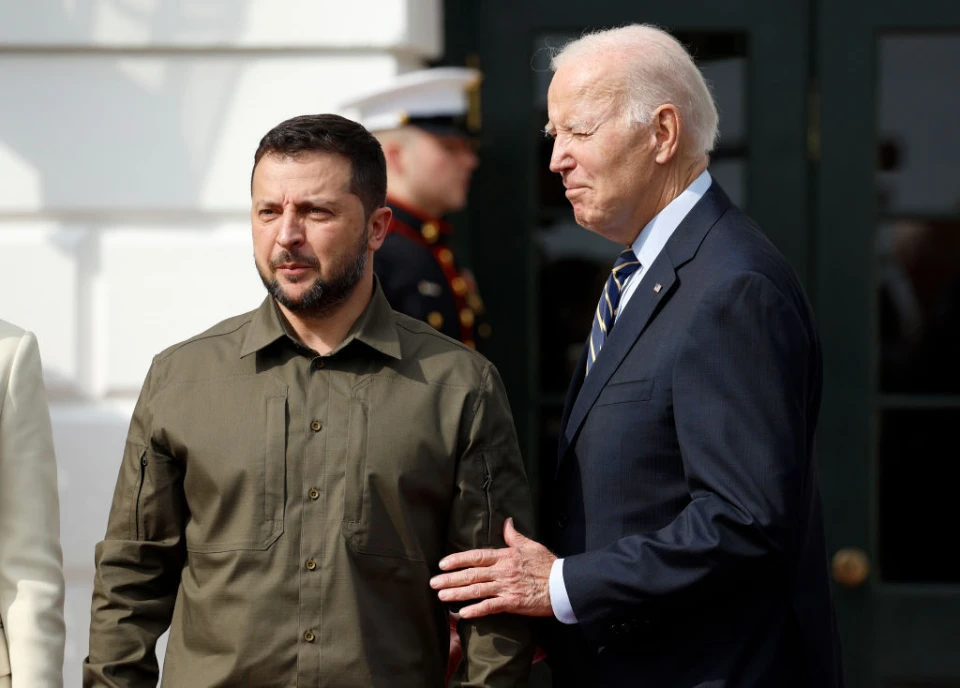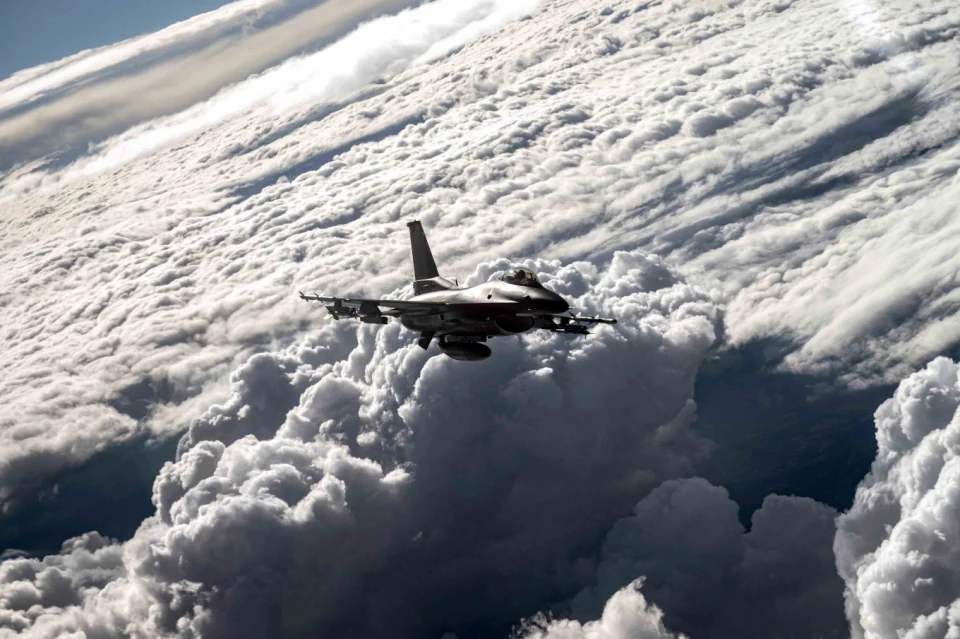
No victory panacea, but protection for Kharkiv: How permission to use Western weapons on Russian territory will help Ukraine
As May ended, Ukraine's allies debated daily whether to let Kyiv use Western weapons to hit targets in Russia. Ukraine's Armed Forces needed this capability, Ukrainian society demanded it, but key leaders were hesitant. The U.S. and Germany hesitated until the last moment but eventually agreed, though with some limitations
Highlights of the article:
- Why Western allies were hesitant to allow strikes on Russian territory
- What changed the USA and Germany's position
- How the USA's permission can help Ukraine in the war with Russia
Why Western allies were hesitant to allow strikes on Russian territory

Photo: Reuters
In movies, war scenes often show strikes on both sides. Moreover, under international law, a defending country can legally strike military targets in the aggressor state. But the reality is different.
Since the start of the full-scale war, Ukraine's Western allies have drawn "red lines" on their involvement. The main rule: they won't join the conflict directly but will support Ukraine to resist Putin's aggression.
Initially, they refused to send Kyiv armored vehicles, howitzers, tanks, planes, long-range missiles, and more. However, the dynamic frontlines, Russia's relentless aggression, and civilian casualties forced Western leaders to reconsider. This change always came after months of diplomatic talks, public appeals, rallies, and behind-the-scenes discussions. To defend themselves, Ukrainians had to push hard for necessary weapons from their allies, especially offensive ones.
Each time the West agonized over whether to fulfill Kyiv's latest request, fearing escalation and a possible response from Russia. Each time the taboo was broken – and nothing happened. What seemed impossible one week became routine the next, according to CNN journalists.
Why is this? The answer is simple: Russia and the USA own the largest nuclear arsenals in the world, with about 10,000 nuclear warheads combined. Although nuclear weapons were used in war only twice, 79 years ago against Japan, it was enough to make nuclear war the greatest nightmare of modern civilization. It almost happened during the Cold War, like during the Cuban Missile Crisis when John Kennedy and Nikita Khrushchev reached an agreement just three hours before a potential conflict that could have altered the course of civilization. Nuclear weapons, especially thermonuclear ones, can obliterate megacities in seconds, turning them into dust and leaving radiation that kills everything around. Thousands of such bombs could trigger a global crisis. While nuclear weapons might not destroy all of humanity, they could shatter the world order, centuries of progress, and fragile ecological stability.
It's clear the Western world wants to avoid this scenario, and not only the West. China has also unofficially warned Putin against using nuclear bombs or even less destructive tactical nuclear weapons in Ukraine. This nuclear nightmare, magnified by movies, books, and media, keeps politicians who make crucial decisions about aid to Ukraine awake at night. For the USA, it's a real sword of Damocles, looming large despite fading into the background for the past two and a half years.
Although Ukrainian President Volodymyr Zelenskyy has often said in interviews that Putin "loves his life" and won't commit suicide by using nuclear weapons, no one can guarantee this. This policy of uncertainty is a trump card for the Kremlin, scaring the West like a children’s horror story. Russians frequently break their promises, as seen when they claimed they wouldn't attack Ukraine but then did the next day. Everyone knows how dangerously maniacal the Russian Federation's authoritarian leader is, ready to send hundreds of thousands of soldiers to their deaths and destroy anything in his way to reshape the world order in his favor. This is why Western politicians draw "red lines" to officially avoid "escalating the conflict" and becoming war participants, and unofficially to avoid provoking the Kremlin, fearing he might push the button and shatter the peaceful idyll in the West.
However, Ukraine's daily challenges force these "red lines" to be constantly pushed back and redrawn. The West acts like a sapper, cautiously checking everything before taking a step, always remembering that one careless move could trigger a deadly mine.
What changed the USA and Germany's position

Photo: Suspilne
The same goes for striking Russian territory with Western weapons. The British led the way, not restricting their Storm Shadow long-range missiles (supplied in spring 2023). They weren't scared by the Kremlin's nuclear threats. But Kyiv relies heavily on the USA and Germany for most of its arms, and their firm "no" posed a problem for effective defense.
This year, Ukrainians first tested the Russians using their own tactics (drone strikes on Russian refineries), then spontaneously with Western weapons (BILD reports that the Ukrainian army used the Patriot system at least once on Russian territory). Eventually, the West agreed that pushing the "red lines" further was safe since the Kremlin only issued threats without taking new actions.
The pivotal factor that changed Washington and Berlin's stance occurred a month ago in the Kharkiv region. The Russians opened a new front section, quickly capturing several border settlements, which forced a reevaluation.
Everyone knew about the large gathering of soldiers and equipment, as it couldn't go unnoticed. Despite this, Ukrainians couldn't use Western weapons across the border to push back the Russians, leaving Western Allies with no choice but to wait and hope for their trenches and fortifications. The delay of military aid from the USA for half a year made the situation even more perilous. While the Armed Forces managed to stabilize the situation at great cost, they suffered losses in territories, soldiers, and civilians. To prevent history from repeating itself in regions like Kharkiv, Sumy, and Chernihiv, where enemy forces are increasing, Kyiv seized the opportunity to strike with Western weapons in border regions of Russia. As the saying goes, the best defense is a good offense.
During the last week of spring, Ukraine's Western allies publicly declared that the Ukraine's Armed Forces should have the autonomy to use all provided weapons for military purposes within Russia to protect themselves. From the French president's statement advocating for neutralizing Russian military bases launching missiles to the positions of countries like Canada, the Czech Republic, Poland, Sweden, Norway, Finland, Denmark, Estonia, Latvia, Lithuania, the Netherlands, Great Britain, and others, all confirmed they didn't impose restrictions on weapon use. Eventually, President Joe Biden and Chancellor Olaf Scholz also endorsed this idea.
On May 31, US Secretary of State Antony Blinken officially confirmed that President Joe Biden allowed Ukraine to strike targets on Russian territory with American weapons. Zelenskyy hailed this move by an ally as "a step forward." However, there's a restriction: strikes are permitted only on border positions of Russia to enhance Ukraine's self-defense. The Germans were even more specific, limiting strikes to within 40 km from the border, focusing solely on protecting the Kharkiv region amidst the ongoing Russian offensive. Both American and German officials cited the situation in the Kharkiv region as the primary reason for this change in stance.
This allows Ukrainians to defend themselves, even across the border against Russian attacks, as was emphasized by Antony Blinken, highlighting the defensive nature of the strikes. This underscores 'red lines' – no permission for offensive strikes to avoid escalating tensions officially or inadvertently increasing nuclear threats.
Some experts speculated that Biden's decision to grant permission wasn't solely due to the offensive in the Kharkiv region but also influenced by the internal presidential election race.

Photo: GettyImages
"Throughout his presidency, Biden's support for Ukraine seemed half-hearted. I'm inclined to believe that this recent authorization came under pressure due to Trump's increasing unpredictability and his wild statements about bombing Moscow and Beijing. Politicians like Biden, who are seen as predictable and professional, are losing ground to "adventurers" like Putin and Trump. That's why Biden appears to be walking a tightrope," says Valentyn Badrak, director of the Center for Army, Conversion and Disarmament Studies. He suggests that even with this authorization, Biden is still hesitant due to Putin's nuclear threats.
This perspective is interesting because it mirrors the political environment during Joe Biden's upbringing. At 81, he was 20 years old during the Cuban Missile Crisis, a time when the Soviet nuclear threat loomed large in American consciousness.
In any case, despite a delay of at least a month since the new wave of Russian aggression in the Kharkiv region, the Ukrainian Armed Forces now have the opportunity to engage in counter-battery combat with howitzers and fire rockets across the border, targeting the concentration of Russian personnel and equipment. This move aims to disrupt the Kremlin's narrative about a "sanitary zone" in border areas.
How the USA's permission can help Ukraine in the war with Russia

Photo: U.S. Air Force
Now, Russians can't cheat and stay safe while waging aggressive war; Ukrainian forces can reach them even a hundred kilometers away from the border.
Some experts see this as the start of a turning point in the war. Valentyn Nalyvaichenko, former head of the SBU, told Espreso that it "will allow the Armed Forces to push back, repel, destroy the enemy's military logistics at the ATACMS distance." That's 300 km.
However, not all experts are so optimistic. There are still limitations on defending against Russian attacks in the Kharkiv region and possibly from potential threats in the Sumy and Chernihiv regions. Plus, thousands of ATACMS or other long-range missiles haven't been transferred to Ukraine, so pushing Russians deep into their country hundreds of kilometers across the border won't be so easy.
As per Serhii Zgurets, director of Defense Express, as reported in his weekly column for Espreso, the USA has allowed Ukraine to utilize HIMARS multiple-launch missile systems, GLSDB guided munitions (with a range of 70 km), and artillery to target Russian territories from where attacks on the Kharkiv region originate. However, the permits do not cover the use of ATACMS missiles.
"This situation leaves a lingering question: If the enemy advances on areas like Sumy or Chernihiv instead of Kharkiv, will new permits be required? And why the restriction on ATACMS? The enemy employs aircraft at airports within a 200 km range, raising concerns about air defense. Will they head to Kharkiv or other cities? Hopefully, this marks the initial step toward lifting the ATACMS ban," remarked Serhiy Zgurets.
This strategy seems aimed at countering the Russian advantage, particularly in the sky. Major General Viktor Yahun, SBU reserve, highlights the devastating impact caused by the enemy's 500 kg guided aerial bombs launched from fighter jets without entering Ukrainian airspace but from their own territory.
"Firstly, this permission won't solve all our problems, and victory in that direction won't come overnight. These things need to be planned in advance. Our allies, as usual, were late with granting permission, and then imposed certain restrictions. Nevertheless, I'm hopeful the situation will turn in our favor. Their planes don't even enter our airspace; they're bombing Kharkiv from 70 km away. So, using Western weapons to drive the fighters away from Kharkiv is exactly what we can do now."
Moreover, the expert points out that enemy forces and resources have been amassing along logistical routes at the border, posing a challenge that the Armed Forces couldn't address:
"The resources we had were limited in range. Now, with long-range missiles, we can cover this section of the front, safeguarding against potential build-ups of personnel, military equipment, warehouses, command or support posts. This decision was truly necessary. Using US weapons to proactively eliminate threats in Russian territory will significantly enhance our capabilities."
According to Viktor Yahun, the key benefit of the authorization to use Western weapons lies in the potential deployment of F-16s, expected as soon as this summer in Ukrainian airspace:
"The most concerning aspect was the prospect of using F-16s solely within Ukraine's airspace, as Belgium pointed out, it seems somewhat absurd. These aircraft have a striking range of up to 600 km, depending on the armament. Their primary role should be to prevent Russian aircraft from approaching our territory, which is crucial for our defense."
In summary, the authorization to use a wide range of American weapons within Russian territory, despite its limitations, is seen by many as a step toward challenging established boundaries, benefiting Ukrainian defense. While the Kremlin may continue to leverage nuclear threats, history over the past two and a half years of war has shown that breaking taboos has not resulted in catastrophic consequences. However, this doesn't mean risks don't exist. This uncertainty poses the main challenge. Consequently, Western leaders will likely continue to tread cautiously, grappling with Russian blackmail and the hypotheticals it presents.
- News













































